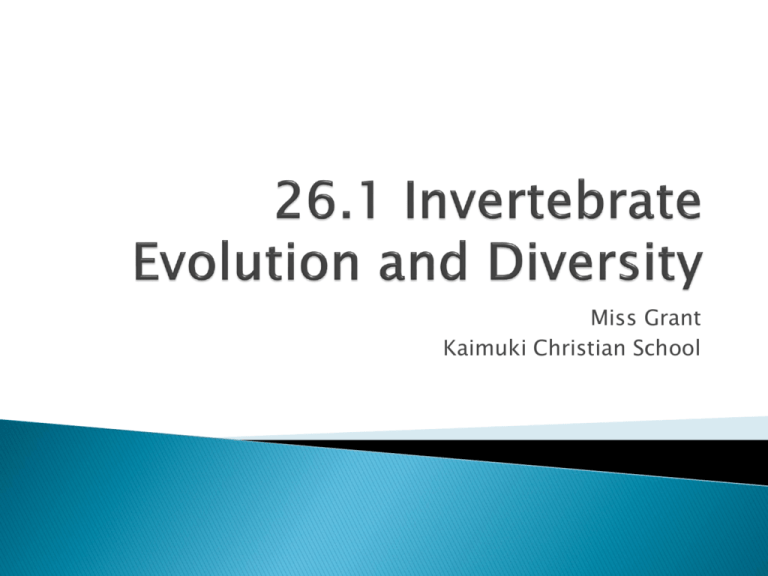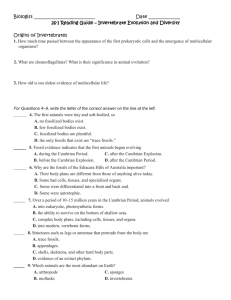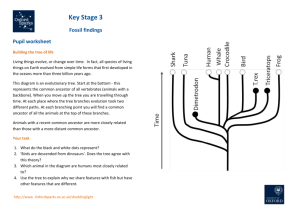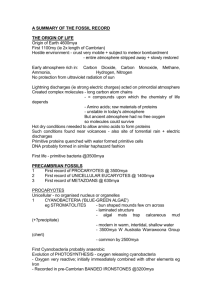26.1 Invertebrate Evolution and Diversity
advertisement

Miss Grant Kaimuki Christian School About 3 billion years after the first prokaryotic cells evolved, organisms remained single-celled Scientists think multicellular eukaryotes evolved from choanoflagellates (single-celled eukaryotes that typically live in colonies) Oldest evidence of multicellular life: 600 million year old fossils (eggs, embryos, trace fossils) Evidence shows the first animals began evolving long before the Cambrian Explosion Ediacara Hills of Australia: where some of the most important fossils explaining early animal life came from 2 major Cambrian Fossil sites: Chengjiang, China and the Burgess Shale of Canada Fossils show that over 10-15 million years animals evolved complex body plans Cambrian animals evolved shells, skeletons, and other hard body parts Why do you think we have more fossils from the Cambrian era than the pre-Cambrian era? Most abundant animals on Earth Live in nearly every ecosystem Present in nearly every food web The cladogram shows the proposed evolutionary relationships among major groups of modern invertebrates Indicates sequence in which characteristics evolved Porifera- sponges Cnidarians- jellyfish sea fans, sea anemones, hydras, corals Arthropoda- spiders, centipedes, insects, crustaceans Nematoda- nematodes (round worms) Platyhelminthes- flatworms Annelida- annelids (earthworms, parasites, leeches) Mollusca- snails, slugs, clams, squid, octopi Echinodermata- sea stars, sea urchins, sand dollars











